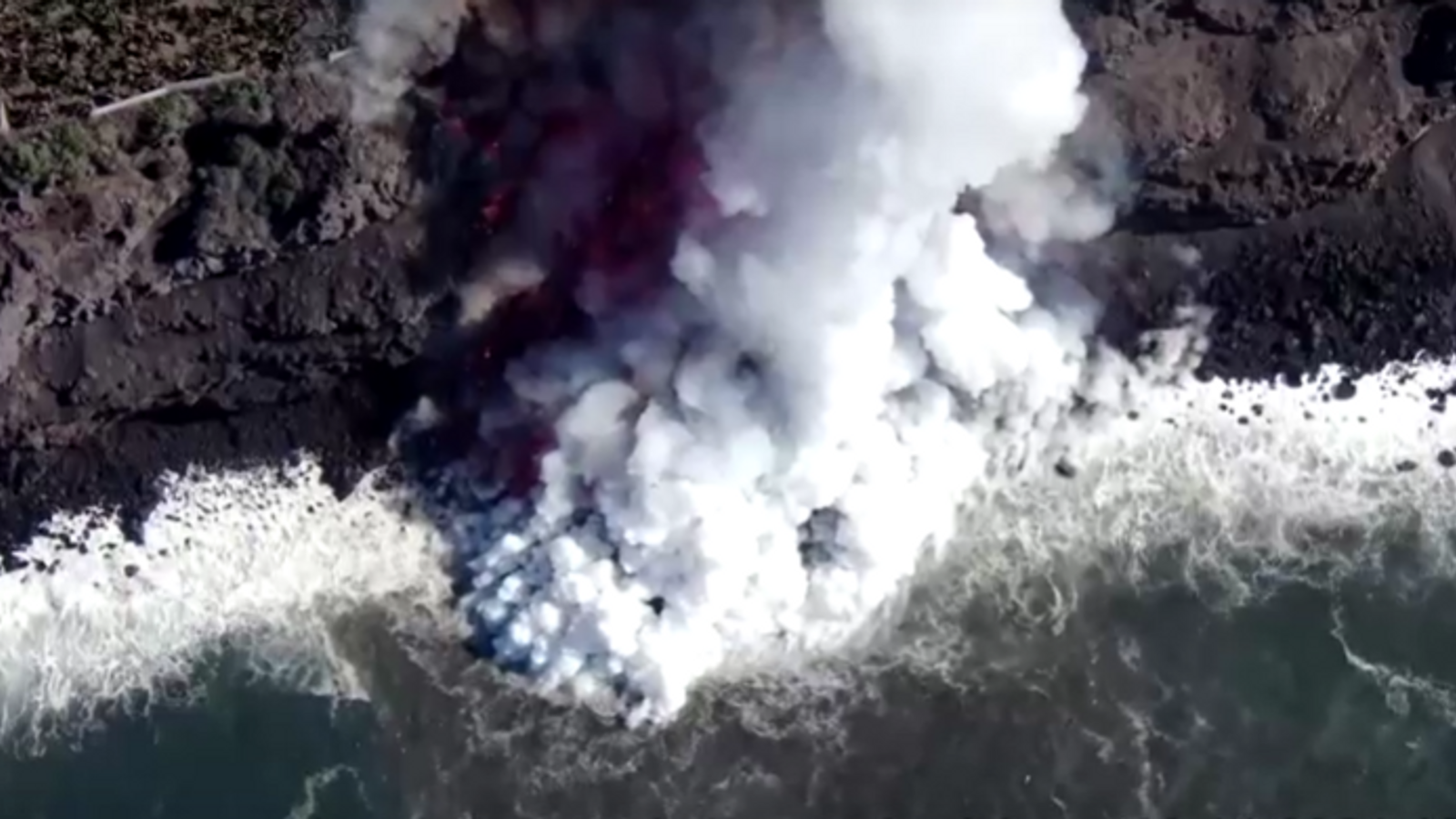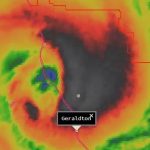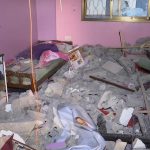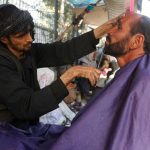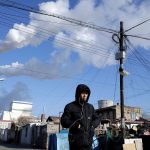Residents have been warned to stay inside after a stream of lava from the La Palma volcano reached the Atlantic Ocean.
The Cumbre Vieja volcano on the Spanish Island has been erupting for more than two months, causing more than 7,000 people to be evacuated.
One of its seven lava flows has now travelled across the island and dropped into the ocean, sending thick clouds of potentially toxic gas high into the sky
Please use Chrome browser for a more accessible video player
It is the third lava stream to reach the water, landing a couple of kilometres north of where two previous flows hit.
Drone footage from the local council showed white clouds of steam and gas billowing out of the water as the red hot molten rock slid down a cliff.
People in the coastal towns of Tazacorte, San Borondon, and parts of El Cardon, were told to stay indoors with windows and doors shut as strong winds blew the cloud back inland on Monday.
Please use Chrome browser for a more accessible video player
The island’s airport was also closed due to the unfavourable weather conditions and remained shut on Tuesday.
La Palma eruption: Homes covered in ash as volcano continues to emit magma and gas more than five weeks after it began
La Palma volcano declared more active than ever as it spews ‘giant lava fountain’ on Canary Island
La Palma volcano: Drones searching for missing dogs find mystery banner and human footprints
The largest lava flow is currently running towards the coast of Tazacorte and access from the southern highway to the coast has been closed, the local council said.
It added that evacuated neighbourhoods remain shut due to poor air quality.
#Copernicus for #Volcano🌋 monitoring
Since the start of the #LaPalma #CumbreVieja eruption, the island of the #Canarias archipelago has extended its area by ~4⃣3⃣ ha, while, according to @CopernicusEMS, 2⃣6⃣5⃣1⃣ built-up structures have been destroyed
⬇️#Sentinel1🇪🇺🛰️ imagery pic.twitter.com/DXknhKW0I9
Technical director of the Pevolca eruption response committee, Miguel Angel Morcuende, said residents in the capital Santa Cruz had been advised to wear masks for the first time since the volcano became active, due to high concentrations of particles and sulphur dioxide in the air.
At least 2,651 buildings have been destroyed since the volcano started erupting, according to the Copernicus disaster monitoring programme.
The molten rock has covered more than 2,463 acres (997 hectares) and has plastered homes with thick black ash.
